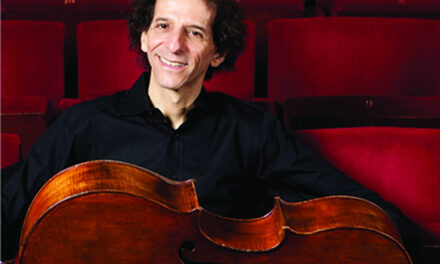There was a surprisingly large turnout in the Ernest Nelson Music Room, on the East campus of Duke University, for an afternoon recital of three of the six Suites for Cello by Johann Sebastian Bach (1685-1750). Under the auspices of the Department of Music, the concert’s guest artist was the distinguished cellist Emanuel Gruber. He currently teaches cello and chamber music at East Carolina University. Previous positions have included principal cellist of the Israel Chamber Orchestra and co-principal of the Los Angeles Chamber Orchestra, as well as membership in the Sequoia Quartet, Camerata Trio, and the Tel Aviv Piano Quartet.
Gruber’s program was an excellent selection, Suite No. I in G, S.1007, coupled with my two favorites, Suite No. III in C, S. 1009, and Suite No. V in C minor, S. 1011. Bach composed the cello suites while he was the Kapellmeister at the Court in Köthen 1717-23. These were neglected and little played until the 13-year-old Pablo Casals found an old edition published by Friedrich Wilhelm Grützmacher (1832-1903) in a used bookshop in Barcelona, Spain. His performances led to a revival, and he committed his edition to disc between 1936-39. The suites are the centerpieces of every cellist’s repertory. Their outstanding feature is the implied three-to-four voice contrapuntal music in a single musical line. Each movement is modelled after a Baroque dance type. Bach modified the five-movement suite form – Prelude, Allemande, Courante, Sarabande, and Gigue – by inserting pairs of lighter dances between the last two.
There is a difference between antiseptic commercial recordings, in which slips can be retaped or edited out, and live performances, especially a live performance of solo works. In the live performance, the artist can take risks for the sake of expression and spontaneity. Gruber opened the program with a glowing performance of the First Suite. His choices of tempos and his phasing were well within current approaches. His tone was rich and full and his intonation was good, as was his articulation. There were fleeting problems with the two remaining works that did not detract from the deep insights Gruber brought to them. The austere Fifth Suite came next. I particularly liked his treatment of the Allemande and Courante. His playing of the severe and formal Sarabande was masterful. The Third Suite brought the concert to a rousing end with its exuberant, soaring movements given their due. His treatment of the second Bourrée pleased me greatly.
Hard-to-find CDs by the artist were for sale during and after the Duke concert. Gruber will give another Bach Cello Suite recital Sunday February 21, 3:00pm at Hayes Barton United Methodist Church in Raleigh. See the CVNC calendar for more information on the upcoming performance.











